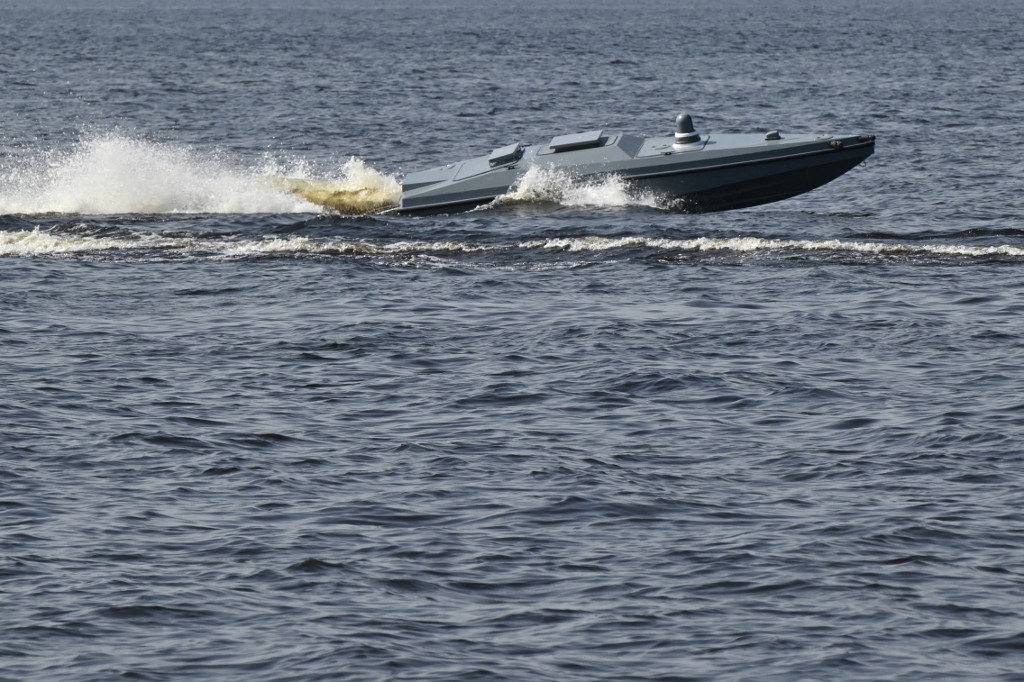Oil from two damaged Russian tankers was detected Friday off the coast of Sevastopol, the largest city in Moscow-annexed Crimea, a local official said.
The Volgoneft-212 and the Volgoneft-239 were hit by a storm last month in the Kerch Strait linking Crimea to the southern Russian Krasnodar region, about 250 kilometers (155 miles) from Sevastopol.
JOIN US ON TELEGRAM
Follow our coverage of the war on the @Kyivpost_official.

One sank and the other ran aground, pouring around 2,400 tonnes of a heavy fuel oil called mazut into the surrounding waters, Russia’s transport ministry said. “A small oil slick reached Sevastopol today,” the Moscow-installed head of the city, Mikhail Razvozhayev, said on Telegram, publishing a video of the oil. He said it was around 1.5 meters (five feet) in width and length.
Sevastopol, with a population of over half a million, is the historic home of the Russian Navy’s Black Sea fleet. It has been heavily targeted by Ukraine throughout the nearly three-year conflict. Already last month, Russia’s emergencies ministry released photos of clean-up work on a beach in Krasnodarskiy Kray, east of Crimea.

A Year of Reckoning: Ukraine’s Defense and Diplomacy in 2024 and the Vision of the Future
President Vladimir Putin has called the tanker spills an “ecological disaster.” Hundreds of volunteers have been deployed to scoop up contaminated soil from beaches in Crimea and along Russia’s southern coast.
Clean-up hampered by war
The transport ministry said this type of fuel oil was particularly hard to clean because it is dense and heavy and does not float on the surface.
This is the first incident of its kind ever involving M-100 grade mazut, the ministry added. “There is no proven technology anywhere in the world to remove it from the water column,” it said on social media.
“Therefore the main method is collection from the shoreline when the mazut has been dumped on the coastal zone,” it added.
Around 78,000 tons of contaminated soil and sand have been removed from beaches so far, Russia’s emergency situations ministry said Friday. Up to 200,000 tonnes may need to be removed.

Iryna Babanina, a researcher at the UK-based Conflict and Environment Observatory (CEOBS), said a lack of equipment had hampered Russian clean-up operations. And while an international convention against pollution covered the Black Sea, “proper actions to address the emergency became impossible during the war”, she said.
Because of the war, deploying “special vessels, aircraft, and other equipment is impossible”, she added. “Information exchange between countries is also problematic. Only the satellite imagery can provide more or less reliable insight.”
‘Shadow fleet’
Ukraine has denounced Russia over the spill, accusing it of trying to ship oil products in vessels unfit for harsh winter sea conditions.
Under Western sanctions, Russia has resorted to using a ‘shadow fleet’ of mostly old tankers to export its fuels around the world. “While we do not know if these exact two ships that sank were part of shadow oil transportation operations – and there is scarce information about what and where they were carrying – the increase of the ‘shadow fleet’ is an environmental time bomb,” Babanina said.
The problem, she added, was that “it’s not clear how the safety of such ships is controlled and who is responsible in case of the disaster.” Russia seized the Crimean peninsula in 2014 following a pro-EU revolution in Kyiv.
Russians losing in Crimea
Ukrainian special operators on Tuesday scored the first-ever-in-history kill of a manned aircraft by a long-range robot boat off Crimea’s western coast in the early morning hours.
Nighttime video from an onboard camera showed a Ukrainian Magura V5 naval drone moving through choppy seas at high speed and under fire from at least two circling Russian Mi-8 helicopters.
Ukraine’s Defense Intelligence (HUR) published the combat images and said the engagement took place near Cape Tarkhankut, the extreme western tip of Russian-occupied Crimea. At least one other boat is also visible, dodging Russian machine gun fire between splashes.
The HUR statement said the drones launched multiple R-73 SeeDragon missiles – a Soviet-era air-to-air missile modified by Ukraine for maritime use – and downed one Mi-8 helicopter before damaging a second, forcing it to flee.
The video shows two missile launches with one clear hit, and probable fire by a drone-mounted machine gun at the Russian choppers with unclear results.
HUR later published a purported recording of one of the Russian pilots reporting being hit by one of the seaborne anti-aircraft missiles.
You can also highlight the text and press Ctrl + Enter






